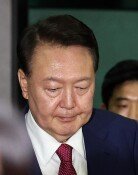[Editorial] MB Should Resolve Non-Regular Workers Issue
[Editorial] MB Should Resolve Non-Regular Workers Issue
Posted May. 16, 2008 08:57,
Since July last year when the public sector and big businesses were obliged to abide by the Temporary/Part-time Workers Protection Act, non-regular workers started to be fired en masse, triggering a huge controversy. As of April this year, the number of non-regular workers, including part-time workers and day laborers, shrank 149,000 compared to a year ago. Some became regular workers but most of them were kicked out of their companies. Against this background, non-regular workers refute that the law is not for protection but for dismissal. Democratic Labor Party Chairman Chun Young-ses criticism against the previous administration came amid the ongoing controversy over the fate of non-regular workers. Chun said last week at the National Assembly, The participatory governments temporary workers protection law ended up mass-producing some 8.5 million temporary workers.
In all likelihood, the law will take a toll on small and medium businesses with 100 to 299 employees when they are subject to the law beginning July 1. Though small businesses are plagued with the labor shortage problem, they cannot afford to absorb all the non-regular workers by giving them regular positions. They will be left to choose between shouldering the burden of growing labor costs amid the sluggish economy and suffering conflicts with laid-off workers.
Large enterprises can cushion the impact since they are capable of paying extra labor expenses, and labor unions consisting of regular workers are willing to make some concessions to non-regular workers. But it is not the case for smaller businesses. According to the Korea Labor Institutes poll on small and medium enterprises last year, 37 percent of them said they would turn non-regulars to regular employees, when asked how they would react to the law. But 18 percent said they would cancel contracts, 10 percent opted for outsourcing and 7 percent chose in-sourcing. Its highly likely that small companies with fewer than 100 employees will be forced to dismiss temporary workers, come July 1.
The Roh Moo-hyun administration, which pushed for the law that management and labor alike abhorred, belatedly held a discussion among the labor, management and the government four months after the implementation, and then sought to investigate the condition on the ground. That is one of the botched policies of former President Roh who had ignored the economic reality all through his stint. Though its predecessor muddied the waters, its the Lee Myung-bak administration that should resolve the issue.
If the current administration continues to sit idly by in the face of the extended implementation, the nation will once again suffer another mass lay-off situation. The government should do its utmost to minimize adverse effects through various measures, one of which is listening to non-regular workers as well as companies, even if these efforts result in a delay in the law enforcement. In order to raise competitiveness in the labor sector and create more jobs, what the government must do first and foremost is to amend the law for the better.





![[단독]尹 “들여보내지 말라니까”…경호본부장 “관저 2정문 뚫리면 소총들고 나가라”](https://dimg.donga.com/c/138/175/90/1/wps/NEWS/IMAGE/2025/07/07/131931090.1.jpg)

